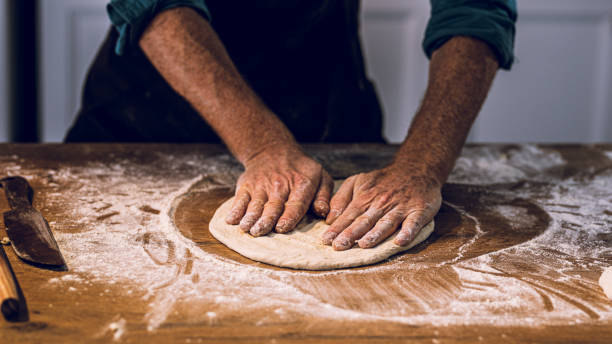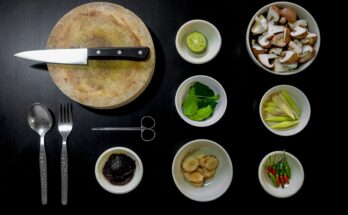The clock is the one measuring device that is least helpful when it comes to yeasted dough recipes. It is impossible to ensure that your dough will rise on schedule or that it will be a proper pizza dough. Which is kneaded in a specific amount of minutes because there are so many variations from kitchen to kitchen, baker to baker, and day to day.
The watch works well as an estimator. There are various techniques to determine. When your pizza or bread dough is prepared to proceed to the next stage, though, to precisely time the timing.
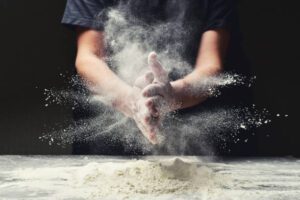 (Photo from istock)
(Photo from istock)
The clock is the one measuring device that is least helpful when it comes to yeasted dough recipes. Making the pizza from scratch allows you to select the precise components. In case there are different dietary requirements because there are so many variations from kitchen to kitchen, baker to baker, and day to day.
Being that you only need a small amount of the materials, it’s also less expensive than purchasing pizzas from the grocery. Basic pizza dough is created using water, salt, flour, and yeast; but, if you prefer, you may also add herbs or use different flour.
Following are a few steps important for your pizza dough
-
Proofing for pizza dough
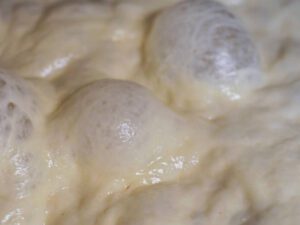 (Photo from istock)
(Photo from istock)
Although instant or rapid-rise yeasts, which may be mixed right into the flour. Don’t require proofing, you should still test your yeast nonetheless to make sure it’s still alive. And to give it a head start on being active. The process of proofing only requires adding the yeast to some warm water and providing it with food.
The yeast has shown that it is alive if it even starts to bubble. To make sure the yeast is properly active. The majority of recipes advise waiting five to 10 minutes. The yeast should be foaming, bubbling, and extremely active at this time. After five or ten minutes, if there are only a few bubbles, you have shown that there is a problem.
-
Kneading of pizza dough
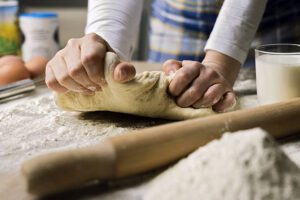 (Photo from istock)
(Photo from istock)
We will talk about the windowpane test, which will demonstrate that dough has enough gluten development, when it comes to correct kneading. While this is an excellent tool for dough that will be baked the same day. If you’re planning a lengthy cold fermentation, you should be aware that gluten will grow on its own during that long rest.
That explains why no-knead bread works so well. And it also explains why dough that has been allowed to ferment for too long loses its usability as the gluten degrades. You should just knead or mix for as long as necessary to include your ingredients into long-fermented dough because you may presume that the gluten will appropriately develop over the lengthy rest.
Many bread recipes specify that the finished dough should be glossy and elastic. The surface of the dough will change from being dull to shining, and it will voluntarily stretch. When dough reaches this stage, it almost always passes the windowpane test.
-
Rising of pizza dough
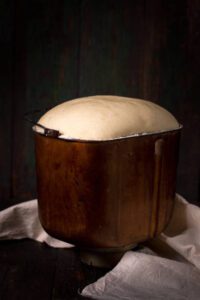 (Photo from istock)
(Photo from istock)
Some recipes call for letting the dough rise until it has doubled in size. The dough’s volume, not its height, has been doubled. The issue is that whatever it is you’re looking at is presumably expanding both in width and height.
This issue can be resolved by placing your dough inside of a container with straight edges and measuring the rise there. There are buckets for rising dough that are made just for this use. But you can use something that’s undoubtedly already in your home. A typical drinking glass or canning jar with straight sides. Instead of purchasing yet another container that you have to store.
A drinking glass won’t accommodate the entire quantity of dough, but you may cut off a piece, place it inside, measure the height of the dough, and note where it should be when it has doubled. Your main ball of dough and your glass should rise at the same rate as long as they are in similar settings.
When it comes to baking preparation, pizza and bread differ somewhat. There is no need to inspect your formed pizza to make sure it has risen properly because you can stretch, top, and bake pizza in a short amount of time. With bread, however, you need a second full rise after shaping and before the loaf is baked.
-
The Poke Test
Actually determining if the dough has doubled is not the purpose of the poking test. Instead, it determines if the gluten is ready. Dough is incredibly elastic when it is first formed into a ball for baking; you push it, and it pushes back. As a result, your freshly created loaf will immediately rebound if you probe it with your finger.
When you test it again later, it will recover more slowly. Test again later and the dent will still be there. You want to bake at that point for the majority of bread doughs. If you wait too long, the dough may rise too much and collapse since there is little structure remaining to support it, leaving the dent behind as well.
-
Windowpane Test
When the membrane is visible, the dough is ready to be proved. To perform the windowpane pizza dough test, just break off a piece of dough and stretch it. If the test is successful, the pizza dough will stretch. And the gluten membrane will be visible through the light. Signalling that it is time to store the dough away to prove.
If the windowpane test piece merely tears off without offering that elastic stretch. Add a small amount of water to the dough and retry the test. Do not attempt to knead the dough without first adding water to help the gluten form.
Finally, because you may utilize kneading to create a variety of various dishes, it is a useful skill to learn. You won’t have to worry about purchasing loaves from the grocery store ever again once you’ve mastered the art of kneading everything from pizza dough to bread.
It may take a few tries to perfect the procedure, but if you know when the dough is ready to proof, it’s extremely straightforward and uncomplicated.
References:
Want to read good Cookbooks, have a tour of wonderful collection, click on the link below:
https://theperfectblogger.com/10-best-cookbooks-one-should-have/

